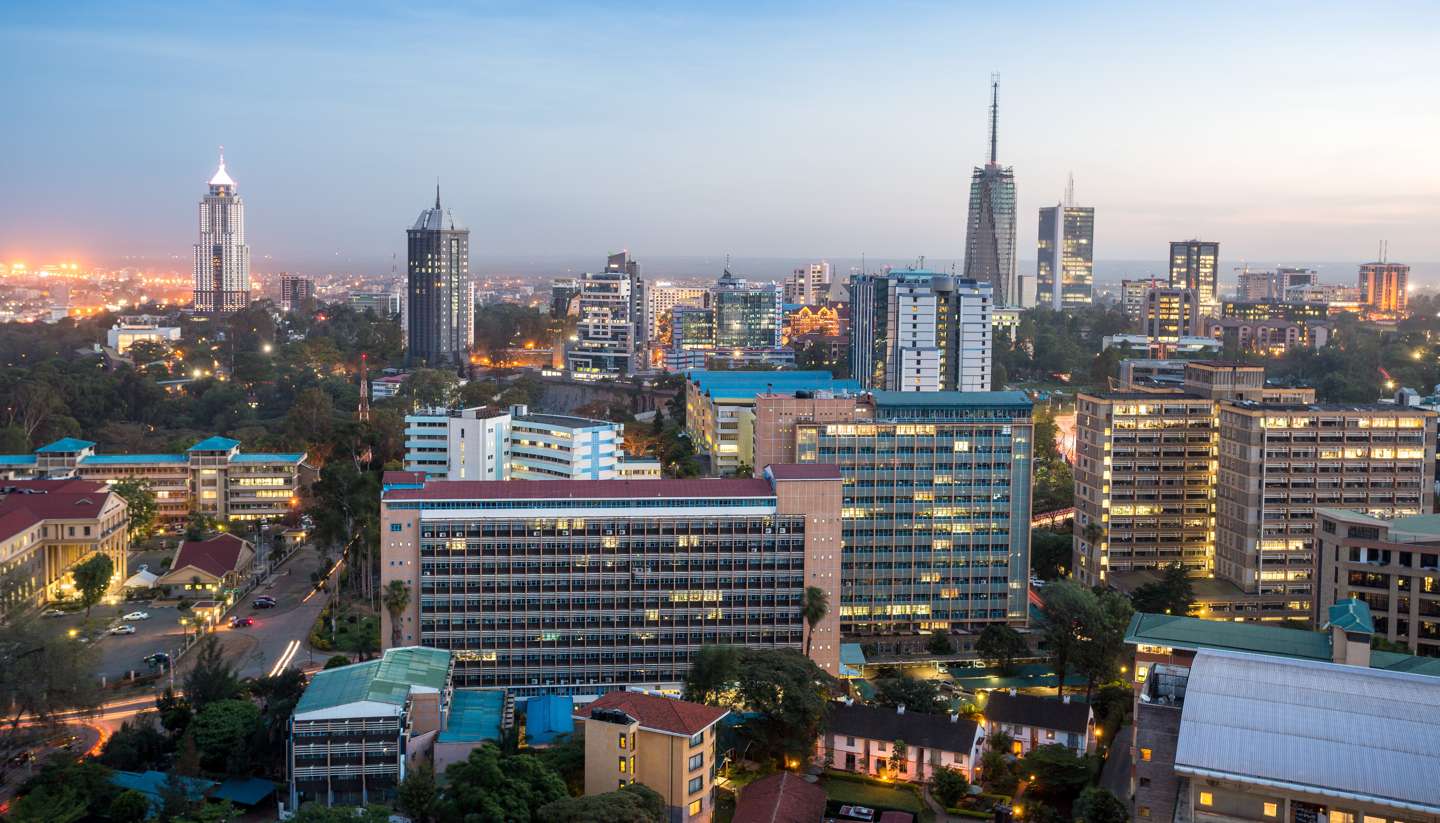Travel to Nairobi
Flying to Nairobi
International flights land at Jomo Kenyatta International Airport, about 14km (nine miles) from the centre of town. British Airways and Kenya Airways operate direct flights to Nairobi from the UK. There are currently no direct flights from the USA, though Kenya Airways plans to have a direct connection by October 28 2018. Fares peak from December to January, and are cheapest around September.
Some domestic flights fly from tiny Wilson Airport, about three kilometres (two miles) from the centre.
Flight times
From London - 8 hours 45 minutes
From New York - 16 hours 30 minutes (including stopover)
From Los Angeles - 21 hours (including stopover)
From Toronto - 16 hours (including stopover)
From Sydney - 22 hours (including stopover)
Travel by road
Kenyans drive on the left, although vehicles usually choose whichever bit of road is least pot-holed until they have to pass one another. Bus and matatu (minibus) drivers are notorious for risky overtaking – cautious, defensive driving is the most sensible policy. Watch for obstacles on the road and check your speed. Local people prefer to walk on the tarmac, particularly at night, and it pays to be wary of wildlife on the road at any time of day.
Driving at night inside national parks is dangerous and officially prohibited. Additional considerations apply in the rainy season, when flooding blocks highways and the murram (gravel) roads inside the national parks become impassable.
In Kenya, a car indicating right does not want you to overtake, while a car signalling left is suggesting that it is safe to do so. Do not take this for granted though. A pile of leaves, sticks or rocks on the road usually indicates a broken-down vehicle ahead. Always stop at police checkpoints, indicated by tin drums and road spikes on the carriageway.
Car-jacking does occur in Nairobi, though tourists and hired cars are rarely targeted. As a precaution, keep your doors locked and windows closed, particularly when stationary in traffic.
Traffic drives on the left and the minimum driving age is 18. A valid national or international driving licence is required to drive in Kenya. Always request a full collision damage waiver and pay the additional fee to reduce the excess, as this can be almost as much as the cost of a new vehicle. Most rental firms can provide a driver for an additional fee. Speed limits are 110kph (68mph) on dual carriageways and 50kph (31mph) in built-up areas. Fines for infractions range from KSh500 to KSh 10000 depending on severity, and temporary courts can be set up on roadsides in order to trial and fine you on the spot.
You will need a 4-wheel drive if you plan to drive on any dirt roads, including inside national parks. Stock up on water, food and spare fuel before heading into remote areas, and always notify people at the start and end point of your journey before you set off.
In Nairobi and other large Kenyan cities, official parking guards will watch over your vehicle for a nominal charge. Local teenagers offer the same service on an unofficial basis. In the event of a breakdown, contact the car hire company as soon as possible. Local mechanics can quickly fix flat tyres and minor mechanical problems (clogged air intakes, for example).
The main motoring organisation is AA Kenya (tel: +254 697 9000; www.aakenya.co.ke).
Emergency breakdown services
AA Kenya (tel: +254 20 697 9000).
Routes
The most popular driving route for tourists is the A109, which runs southeast from Nairobi to Mombasa and northwest from Nairobi to Naivasha, Nakuru and the Ugandan border. The rugged A2 runs north to Nanyuki, Isiolo and Ethiopia, a journey of several days through challenging desert country. It's worth asking for some local advice before setting off: there have been landmine attacks close to the main A2 road south, around Moyale
Coaches
Private bus companies offer frequent, fast (sometimes too fast!) services around the country. There are numerous daily services from Nairobi to Mombasa, Naivasha, Nakuru and the Ugandan border. You should reserve tickets a day in advance; most companies have offices adjacent to the main station in the River Road district.
Coach companies include Coast Bus (tel: +254 72 220 6446; www.coastbus.com), which runs services between Nairobi and Mombasa, and Scandinavian Express (tel: +254 42 212 0674).
Time to city
From Mombasa - 8 hours; Nakuru - 3 hours; Naivasha - 1 hour 30 minutes.
Travel by Rail
Services
The Nairobi rail service is the main network service that is used by the residents in Nairobi. As it is the largest city in Kenya, there are over 1 million daily commuters, with approximately 400,000 per month opting for the train. There is also the Madaraka Express which has services to and from Mombasa, taking roughly 5 hours each way. This time can vary depending on whether you take the inter-county train or the faster express one. This service has replaced the unreliable overnight train nicknamed "The Lunatic Express".
The overnight service from Nairobi to Mombasa is popular with travellers, and first-class tickets include a berth, clean bedding and a meal in the delightfully faded dining car. Second-class berths are sparse but adequate; third class (seating only) is not recommended. Theft is a minor risk so take your valuables with you whenever you leave your compartment.
There is also a railway to Kisumu, but passenger trains have been cancelled since 2012.
You can buy tickets from travel agencies in Nairobi or directly from the railway station on Station Road - look for the Upper Class Booking counter. There is a matatu (minibus) stand and taxi rank in front of the station for transport from the station to town. Alternatively, you can walk along Moi Avenue to the city centre.
Operators
The majority of the trains are now state-run, under the Kenya Railways Corporation (+254 20 340 049; www.krc.co.ke
Journey times
From Mombasa - 13 hours at least.


